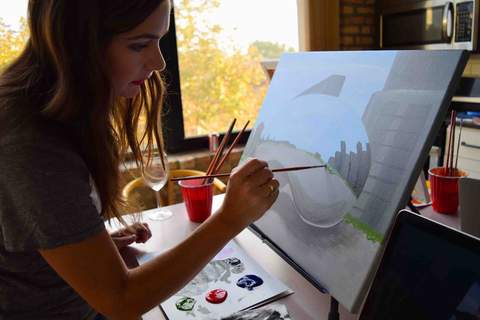
The Professional?s Tricks for a Successful Painting Results
Professional painters can make any home painting job look clean and crisp. They have a lot of institutional knowledge about small things that move a project from good to great.
When you are preparing to paint, assemble your workspace and put all your tools within reach. Keep a bucket of water nearby to keep your brushes from drying out.
Brushes
A good paint brush can make all the difference in a painting project. Bristles should be high-quality, and the brush should have a durable ferrule and handle. A good brush will also be able to hold paint and distribute it evenly across the surface of the wall or piece of furniture.
There are two main types of paint brushes, natural and synthetic. Natural brushes are made from animal hair, and they are available in either white or black. These brushes are used with oil-based stains, shellac and polyurethane, and they leave a smooth finish. Synthetic brushes are usually made from a blend of nylon and polyester, and they can be used with both oil and water-based paints. Higher-quality synthetic brushes often have ‘flagged’ or’sanded’ tips, which helps them hold more paint.
Round brushes are the most versatile of all the brushes, as they can be used for both thick and thin lines. A good quality round brush will have a narrow point, and it will be fuller at the base. These brushes are commonly used for making straight lines and circles in acrylic paintings.
A liner brush is a thin brush that has very long bristles. They are great for adding detail and for painting thin lines. These brushes are typically used with low-VOC or no-VOC paints, as they can be difficult to work with when using other types of paint.
Tape
Professional painters use painter’s tape to ensure crisp lines when painting. Whether they’re painting trims or a ceiling, the proper preparation of the surface and application of the tape is key to ensuring sharp results. Using the right kind of tape for your job can help you avoid costly touch-ups down the road.
Before you apply any tape, wipe down the area to remove any dust or residue that could prevent adhesion. It’s also a good idea to apply a coat of primer to any surfaces you’re painting, as this will help the paint adhere more effectively and create a clean smooth space for your tape to sit on.
It’s also important to use fresh tape when applying it to a wall. Reusing old tape can mar the walls and increase your chances of bleed through. Additionally, it’s vital to remove the tape carefully before the paint is dry. This will minimize the risk of pulling off a layer of freshly-painted surface, which can be time-consuming and costly to fix.
Masking
Masking is an essential step that allows you to paint surfaces without worrying about the consequences of the paint splatter or drip. This can help you save time and effort in clean-up, protect furniture, and create a more polished, professional-looking result. There are different masking techniques and materials available, including tape, plastic drapes, and paper covers. The key is to choose the best masking option for your specific needs and application.
Minimizes Clean-Up
Using the right masking methods reduces the amount of cleaning you need to do after painting. It also helps prevent the need to scrape or sand surfaces that have been covered. Masking protects baseboards, moldings, and trims from paint, preventing them from sticking or dripping. It also protects windows, floors, and other surfaces from paint splatter.
Masking is important for any painting project, but it is especially vital when you are working with a large area or delicate surfaces. It is crucial to take your time when applying and removing masking materials, to avoid damage or mistakes that may ruin the finished product. Having a clear purpose in mind when masking and unmasking will make the process quicker and more efficient. For example, bagging a car to protect it from overspray is more effective than simply covering the car with plastic.
Equipment
Painters must have the right equipment to work efficiently and accurately. This includes tools for prep, application, and cleanup. It also includes personal protective equipment, which is essential to ensuring your safety and the safety of those who will be working with you on your painting project.
For example, painters should always use a roller tray to avoid lap marks on walls and ceilings. They should also use a roller with a short nap when working on smooth surfaces and one with a long nap when working on rough ones. This will prevent them from having to reapply paint and help them achieve the desired look for the space.
Another important tip is to make sure you’re using the right brushes for each surface you’re working on. This will save you time and money because you’ll have the right brushes for every job and you won’t have to go back over areas that weren’t done correctly the first time.
The art of painting is a multifaceted endeavor that requires a delicate balance of creativity and precision to transform spaces into aesthetically pleasing and welcoming spaces for your clients. Mastering professional tips for painters ensures quality results and helps you unleash your full creative potential. From choosing the right paint colors to preparing surfaces and using the proper tools, these tips can make the difference between an average painting job and a truly impressive outcome.


